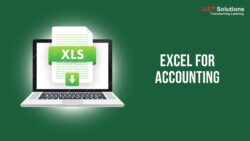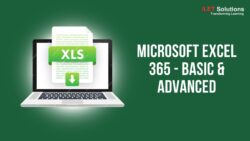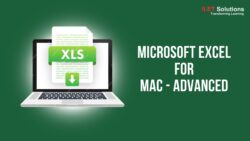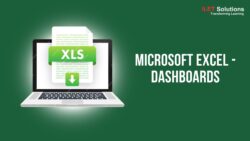Learn how to:
- Import and clean data in Excel.
- Master conditional formatting and its formulas.
- Validate data to ensure information is error-free.
- Use auto filters to display data that meet a certain criterion.
- Group and ungroup data.
- Master text, data, time, logic, and IF functions.
- Use conditional math to calculate data based on different criteria.
- Look up exact and approximate data with VLOOKUP, HLOOKUP, XLOOKUP.
- Extract, combine, and report data.
- Convert data into a table.
- Analyze data efficiently using PivotTables.
- Present data using charts.
- Create calculators for tax and debt.
Once enrolled, our friendly support team is here to help with any course-related inquiries.
Summary
- Skill level: Beginner
- Lessons: 49
- Pre-requisites: None
- Estimated study time: 18h for all materials
- Certificate: Yes
- Accredited by: CPD
- Video duration: 3h 13m
Features
Premium video tutorials
Personalized Learning
Learn at your own pace
Tests and Quizzes
Award winning instructors
Get Certified
Mobile - Learn on the go
Regularly updated content
Accreditations & Approvals
All courses under each learning path are accredited and approved by one or more of the following bodies as is applicable.



Instructors
All courses are taught by reputed trainers with relevant accreditations and industry experience.
Modules
Introduction
A quick introduction to the course.
Importing Data into Excel: Fixing Text and Numbers
How to recognize when text and numbers imported incorrectly and how to use TRIM and FIND and REPLACE to fix errors.
Importing Data into Excel: Fixing the Date
Use the text to columns button to separate the different parts of the date and the DATE function to put it back together as a proper date.
Importing Data into Excel: Get Rid of Blank Lines in Your Data
The video shows two different ways to get rid of blank lines in a dataset and how to sort data without unique identifiers back into its original order.
Conditional Formatting: Using the Icons
This lesson illustrates the basic options of conditional formatting with 4 different examples.
Conditional Formatting: Manage Rules and Use Formulas in Rules
What if the conditional formatting menu options do not cater to what I want? Let’s look at how to customize conditional formatting by way of creating a dynamic To-Do list.
Data Validation: Preventing Garbage Input
We look at how to use basic data validation techniques to reduce garbage input and avoid errors.
Data Validation: Create a Dropdown List
In this lesson, we look at how to use data validation to create a dropdown list in Excel to limit input to pre-set options.
Auto Filters: Display Records That Meet a Certain Criterion
In a dataset, use auto filters to extract lists based on text or date criteria. Let’s look at how to sort using auto filters.
Auto Filters: Combined with Conditional Formatting
We examine how to filter using numerical criteria, conditional formatting, identify duplicate items, and use SUBTOTAL to add values in a filter.
Grouping Data: Create Your Own Collapsible and Extendible Sections
How to group data, and add your own expandable and collapsible sections to hide and unhide portions of data.
Grouping Data: Remove Groupings, Fix Borders and Copy Visible Data
Let’s look at how to remove created groupings, copy only visible data, and fix borders on cells to work with grouping.
Text Functions
In this lesson, we learn how to use LEN, FIND, SEARCH, LEFT, RIGHT and MID.
Text Functions: Combine
In this lesson, we’ll use LEN, FIND, SEARCH, LEFT, RIGHT, and MID in combination to sort out more complex issues.
Date Functions: Understanding How Dates Work
We learn how to use dates as serial numbers, TODAY(), EOMONTH, WORKDAYS, and NETWORKDAYS.
Time: Using Time in Calculations
We examine a timesheet and a payroll calculation to illustrate time as part number, how to format time, and how to calculate gross pay based on time and an hourly rate.
Logic Functions: Using Logic to Supply TRUE or FALSE as a Result
We’ll look at logic functions, including: >, <, =, <>, AND and OR. We also test single or double criteria, and illustrate the MONTH function.
IF and IFS Functions: If You Want a Specific Result to a Logic Test
In this lesson, we learn the basic uses of IF and IFS and how to combine it with AND()/OR().
Conditional Math: Calculations Based on a Single Column Criterion
In this lesson, we learn the basic uses of SUMIF() and COUNTIF().
Conditional Math: Calculations Based on Multiple Columns as Criteria
Let’s look at how to use SUMFIS and COUNTIFS to calculate based on more than one criterion column and add numbers per month.
Lookups: VLOOKUP and HLOOKUP
Let’s learn the basic uses of VLOOKUP and HLOOKUP by building your own invoice template.
Lookups: INDEX and MATCH
In this lesson, we learn the basic uses of INDEX and MATCH by building your own invoice template.
Lookups: XLOOKUP
In this lesson, we learn the basic uses of XLOOKUP by building your own invoice template.
Lookups: Approximate Search for all Lookups
How does an approximate lookup work? We look at one example to show VLOOKUP, INDEX & MATCH and XLOOKUP.
Tables: How to Convert Data into a Table
We learn about prepping data for a table, converting the data to a table, and the benefits of a table.
Structured References in Tables
What’s up with the funny formula references in tables? What does it mean and how does it work? We learn the basics of using structured references.
Power Query: Alternative Way to Get Data Into Excel
What are the basics you have to check when you use Power Query? We learn how to get data into Excel in a much more effective manner than copy and paste.
Pivot Tables: Analyze Data Quick and Easy
We learn the basics of a pivot table, how to create a pivot, refresh and format.
Charts: Basics
In this lesson, we examine how to create a chart, chart elements, and format elements.
Prepare to Print
Learn how to prepare your file to be printed, page break previews, page layout options, and headers and footers.
Repayment Calculator: Calculate Payments
In this lesson, we calculate payments (PMT) using financial functions.
Repayment Calculator: Create an Amortization Table
Learn how to create an amortization table to show the interest and balances for each period.
Tax Calculator: Understanding a Tax Scale
In this lesson, we learn how to use Excel formulas to calculate your tax liability.
Tax Calculator: Create Your Own
In this lesson, we create a lookup table and use lookup formulas to calculate tax liability.
Target Audience
- Graduates exploring placement in the Microsoft Excel positions across industries
- Professionals needing upskilling to be future-ready or become more productive in their current roles
- Experienced individuals exploring Excel for Accounting
How do I Access The Program
- Buy the course online
- Save your payment transaction receipt for any future reference
- Our team will share the credentials to enable you access your course online within 2 business days of payment transfer
Bulk Orders
Incase you are looking for bulk user licenses, or customized Learning Paths for various Job Roles, reach out to us with your detailed requirements.






Reviews
There are no reviews yet.